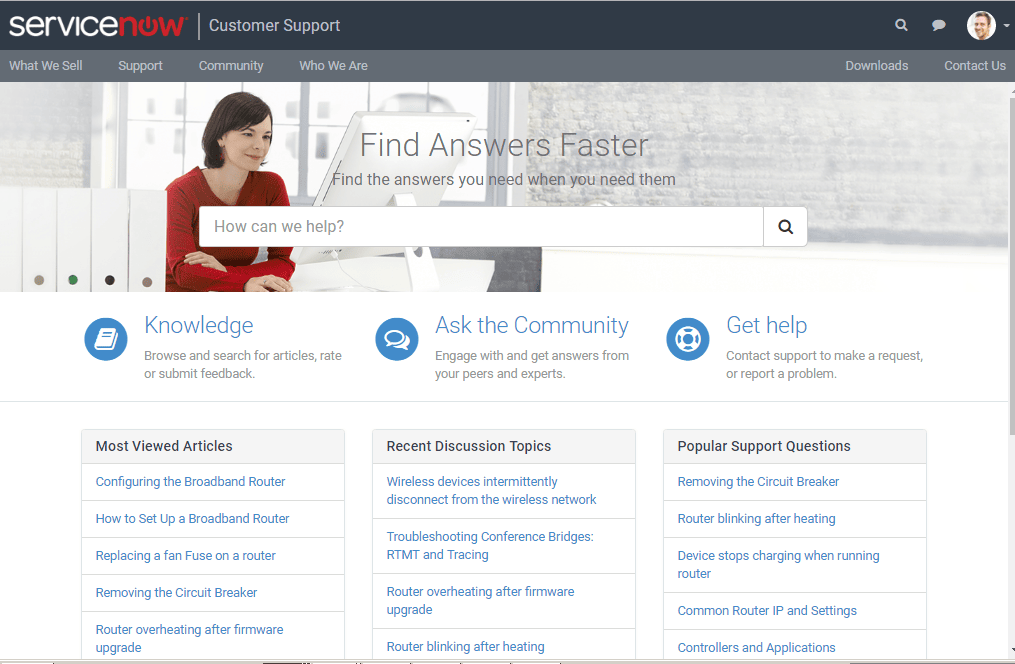
Leveraging Field Service functionalities for effective Customer Service Management
This blog is intended to showcase basics of Customer Service Management and how Field Service has automated CSM process effectively. It will help one to understand what Customer Service Management (CSM) is, how one can configure its environment, how CSM and Field Service management (FSM) is related and how does it work.
What is Customer Service Management (CSM)?
CSM is an Application by ServiceNow team, which enables one’s ability to provide Service or Support to those Customers, who are currently in the Contract with the Organization, through possible means of Communication Channels such as Chat, Email, Phone Call and Social Media.
External customers can reach out to one’s organization for assistance. Customer Service Agents receive these communications and work with Customers to answer their queries and resolve issues, creating Cases as needed.
How to configure Customer Service Management (CSM)?
- Login to the Instance.
- Type Plugin in the Application Navigator as shown below and click on it.
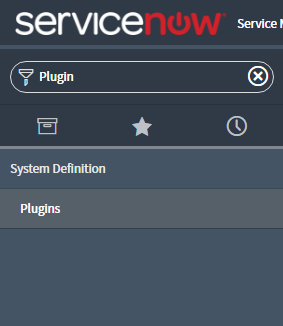
- Type Customer Service in Name and click on it, plugin form will be displayed.
- Click on Activate/Upgrade Related-link. it will activate all the necessary plugins, which are the pre-requisites for Customer Service Management, if those are not already activated.
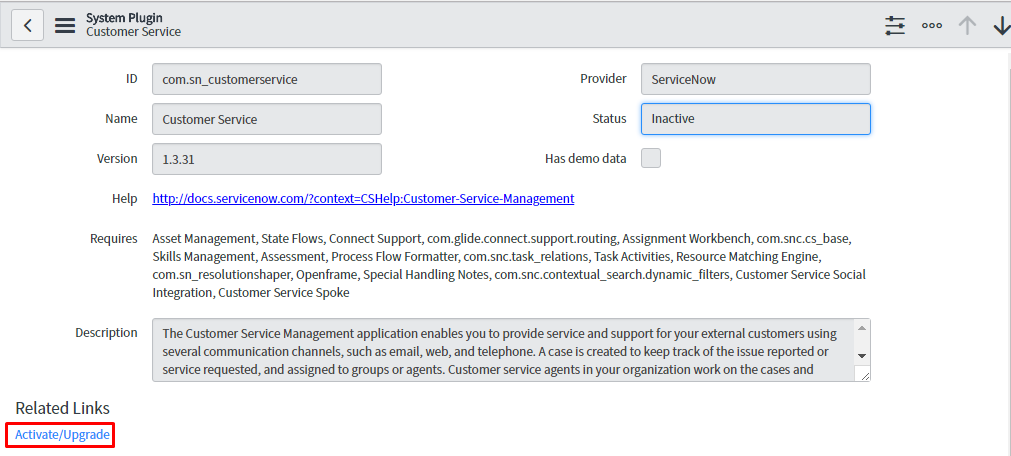
- Once activation is completed, one can check a whole new, Customer Service Application will be present, along with Customer Portal Usage Homepage, as shown below:
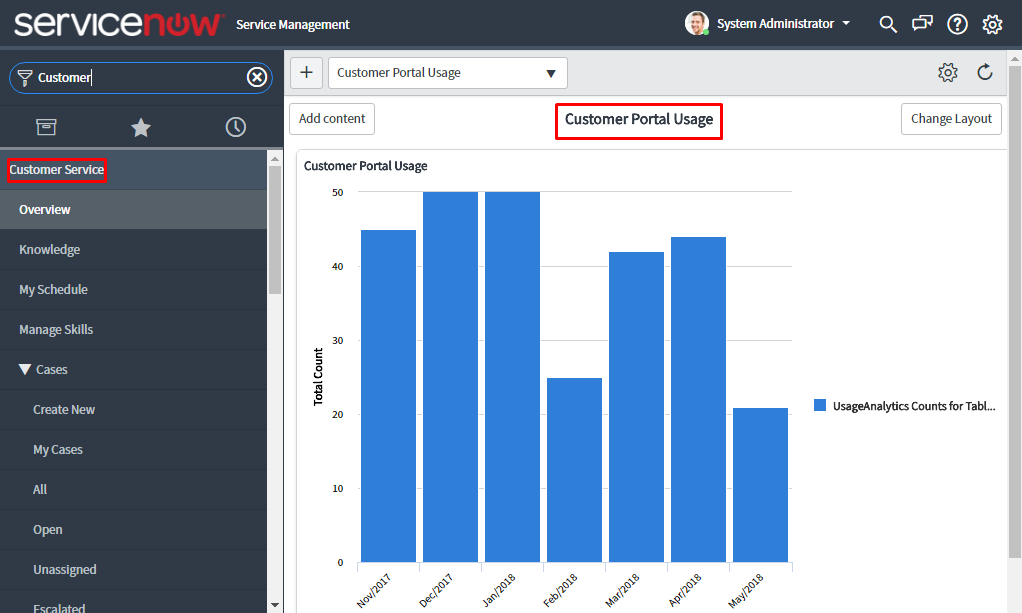
What is the flow of Customer Service Management?
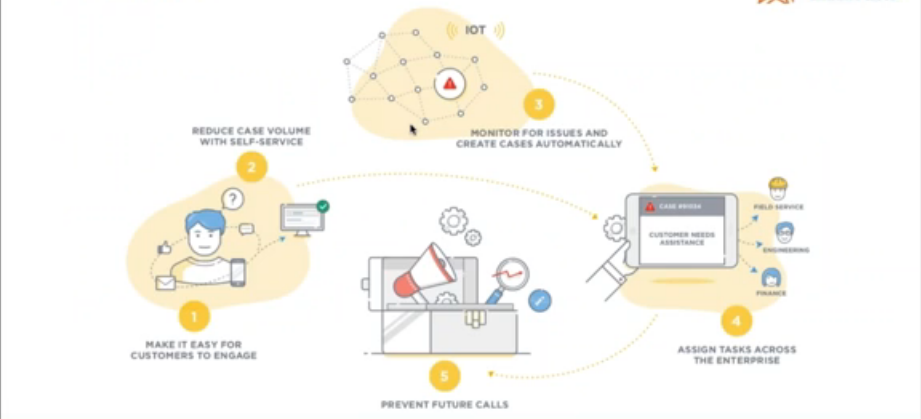
The above shown Flow-Diagram describes basic flow of CSM, right from query generation up to query resolution. This process is partitioned into main 5 stages. Those are as follows:
- Query Generation: Customer raises a query from over the specified communication Channel such as mail, web, chat, etc. This query/issue is received by the Customer Service Agent of that Organization or Domain.
- Volume storage of queries: All the conversation from any mode of communication is stored automatically, for future references. Also, it reduces the activity needed to store manually or search Record in Repository.
- Case creation: Customer Agent analyzes the issue, checks for the reference of any previous such issue, precisely in Knowledge Base. If he finds one, he provides it to Customer to relate and Implement necessary steps to eliminate the issue. If Customer still faces the issue, a Case is created. It is created automatically on 1 click from either a chat or by any other means.
- Assignment of Case: Once Case is created it is then assigned to the respective team across the Organization/enterprise, to resolve the Case. It can be assigned to either Field Service Team (in case any customer site work is there), Finance Team (if case related to Finance occurs), etc.
- Case Closure: After resolution of the case, Suggestions are provided by the person, whom Case is assigned, which basically serves the purpose of Prevention of Cases/Queries for similar kind of issues. And finally, when suggestions are accepted, the Case is Closed.
Some key Features of Customer Service Management:
- Communication between an agent and the customer or an agent and other employees within the organization.
- Information from the case that can be included in the knowledge base and used to help resolve other cases.
- CSM has been integrated with Field Service Management, which is helpful to track the complete process.
- Much advancement has taken place in a recent release such as Time Recording, AI for case management (eases the flow of Case creation flow) which is an advanced customization, Community module/link inclusion, etc.
- Improved Knowledge Management (article access, Subscription) and Enhanced Field Service functionalities/modules (Questionnaires, Assessments, Sequential Assignment of Tasks, etc.) are also included in latest releases and patches.
How Agent Intelligence (AI) works in Customer Service Management?
- Agent Intelligence is a process which assists with Case creation, from a minimal of information.
- Whenever an issue is raised via for ex, Chat, Customer Service Agent receives a Chat Notification.
- Once he accepts the Issue/Ticket in Queue a dialog Box appears as shown below.
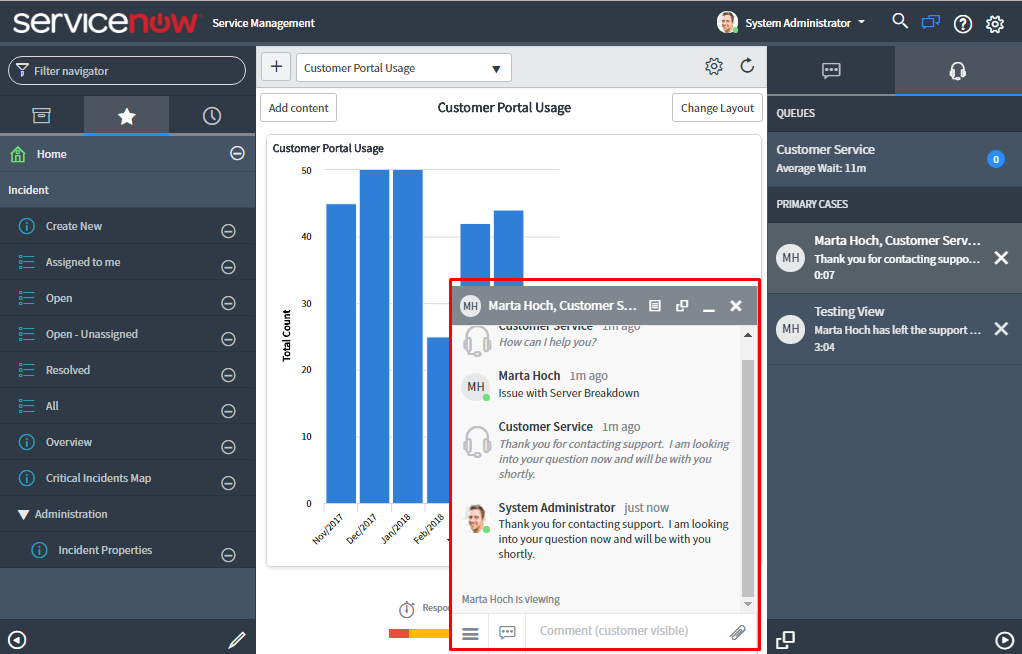
- One can see in that chat-box, what is the issue with Customer. Also, an agent can provide his suggestions as well.
- Agent can also assist by providing Knowledge Base by simply dragging and dropping it over the chat-box (as shown in below screen-shot). This is also an advanced AI.
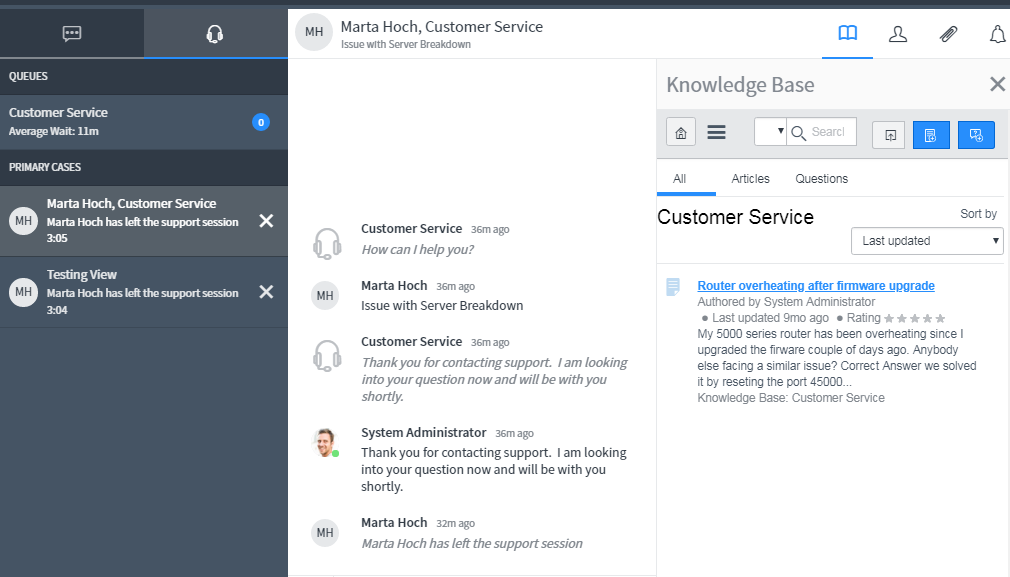
- Now, to create Case, Agent does not need to manually fill all the Information, as shown below, Agent simply hits Create Case option.
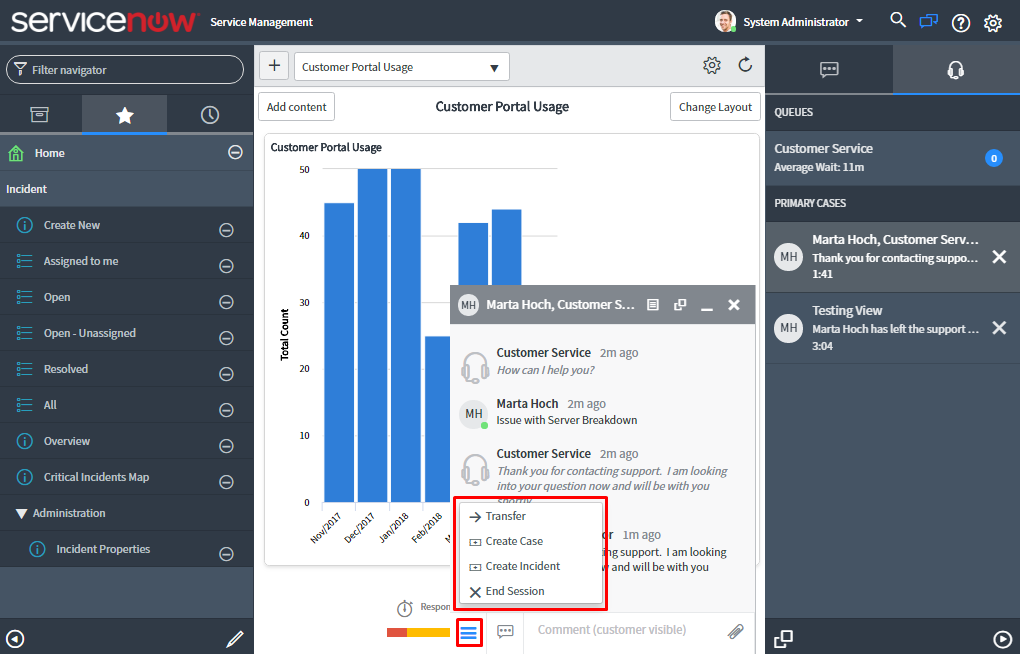
- Thus, a Case gets Auto-Populated with all the User and Account information along with Issue describing in Short-Description (refer below screen-shot).
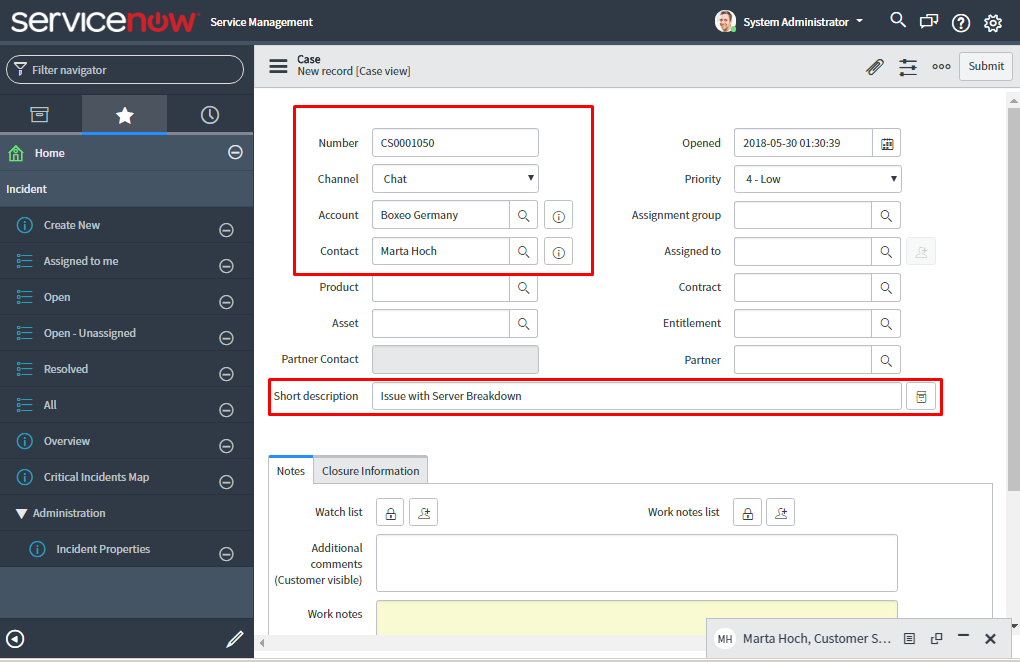
- This is how, an AI (Agent Intelligence) works, in a Programmatically and more Automated way.
What is Field Service Management (FSM) and how is it beneficial in CSM?
- Field Service Management is used to manage Organizations Work Tasks which are more specified to and needs to be performed on Site or on Customer Location.
- It helps by assigning tasks to agents based on matching agent’s skills, geography, etc.
- It also helps in keeping track of the available Inventory, such as physical Assets, Hardware, etc.
- It also provides functionalities such as tracking of Field Agents details, his travel details (to site location), how much time he has worked on field on a specific task, etc.
- Suppose a Case is created, and if that case somewhere implies that a subject need to be replaced/fixed at the customer site, then FSM comes in picture. It tracks and executes all those tasks as mentioned in above points, in a systematic manner.
Where can one find the Relationship between CSM and FSM?
- Cases are primary entity in Customer Service Application whereas, Work Order is an entity for Field Service Management.
- Its integral relationship can be viewed in Cases.
- Whenever a Case is created, Work Order tab is available there.
- If the case requires some on-field tasks to be performed, then a Work-Order is created.
- Work-Order might have multiple Work-Order Tasks in it.
- Please find below an attachment showcasing relationship between CSM and FSM:
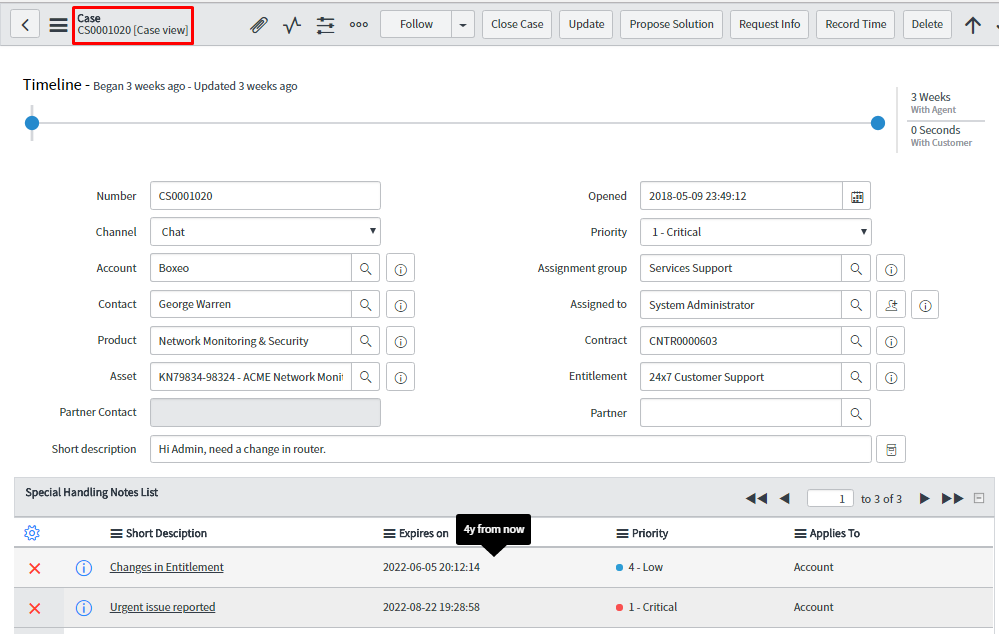
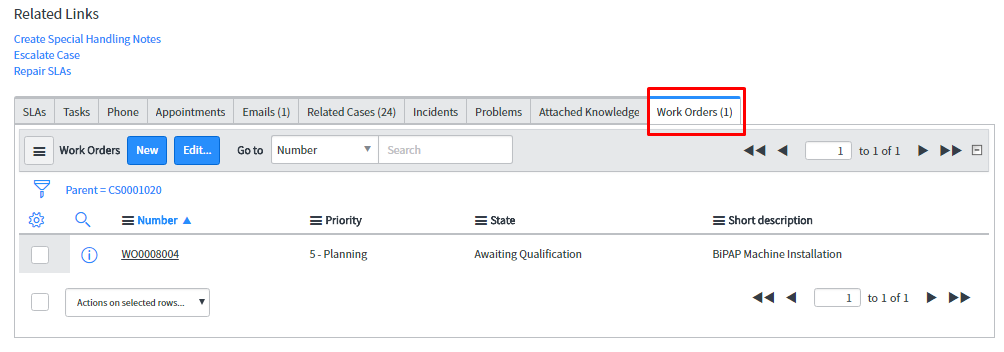
How can we redirect to CSM Portal?
- https://your_instance_number.service-now.com/csm
- After re-directing, you will be able to view and access all modules of CSM Portal.
We are pretty sure that this blog must have given an overall idea of what Customer Service Management (CSM) is and how Field Service Management plays a vital role in implementing CSM in ServiceNow.
Any comments\suggestions are most welcome. We have posted further blogs as well on other topics and will frequently come back with something innovative.

